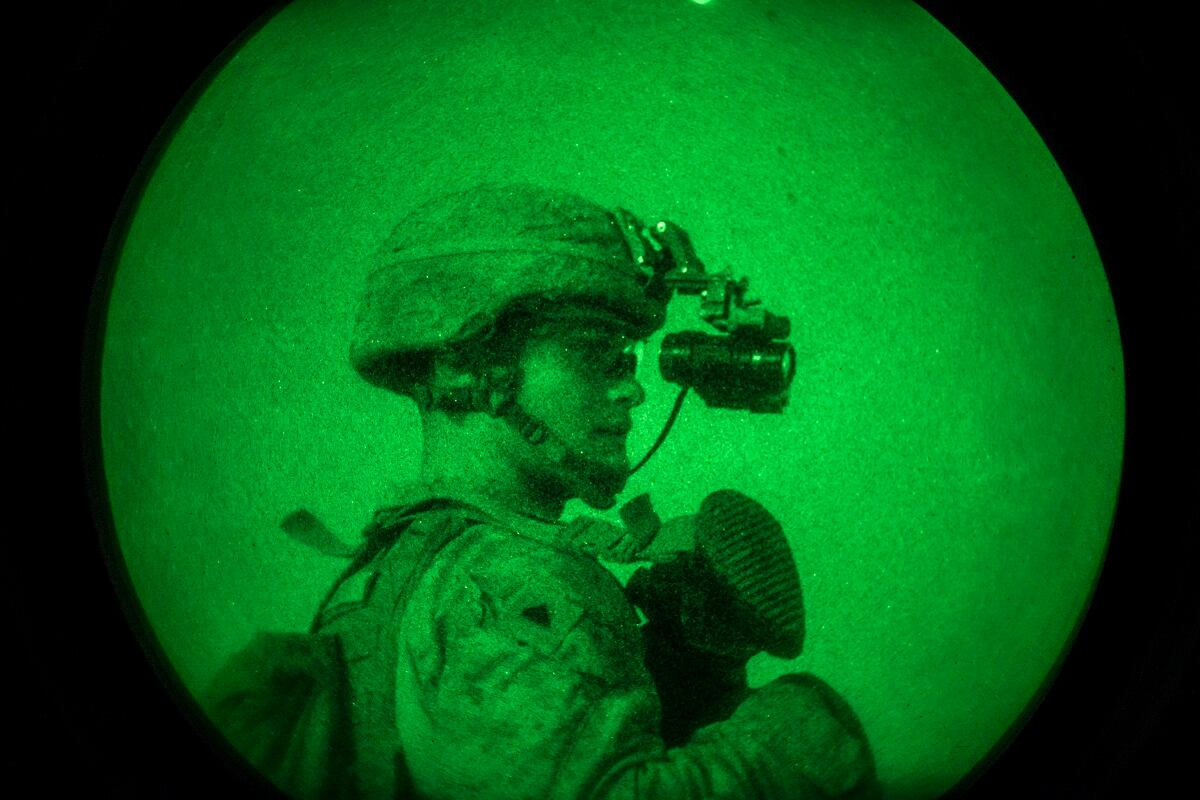Night vision advances have been delivered to soldiers and Marines in a steady drip over recent decades, but a new device being fielded to units in both services this coming year will provide troops with a clearer vision of both the real and virtual battlefield.
The Enhanced Night Vision Goggle-Binocular and advanced targeting and data display technologies expected to complement the gear will allow troops to do much more than “own the night.”
Primarily an Army program, it will also benefit Marines. Brig. Gen. Anthony Potts, head of Program Executive Office-Soldier, said this fall that 10,000 pairs will field to Army units beginning late 2019 through 2021. At the same time, the Marines will receive 3,100 systems.
The ENVG-B gives users two tubes, which solves age-old depth perception problems and widens the user’s view.
There’s an interim advancement that still uses the monocular design but includes enhancements such as clearer vision and quicker tracking — that’s the ENVG-III, which began fielding this past year to select special operations units and will hit some regular Army units in early 2019.
RELATED

Not one to wait long, the Marines have posted a requirement for an interim night vision binocular capability. The notice, posted in recent weeks, wants an off-the-shelf option for Marines to use in the coming months.
More than lighting up dark places, the new system also helps see through smoke, fog and concealment better than any device previously fielded.
But it’s the integration with another program, the Family of Weapon Sights-Individual, or FWS-I, that will advance close combat capabilities in ways that seemed, until recently, to exist only in science fiction.
The FWS-I simultaneously permits the shooter to see a 40-degree view while also seeing an 18-degree view from the weapon sight. This enables shooters to fire from multiple positions, around and above obstacles, without exposing themselves.
The technology is known as Rapid Target Acquisition. RTO speeds up sighting the target and putting rounds downrange, a key obstacle in tense, close combat firing situations when the enemy is moving in covered locations and may only present a seconds-long window to fire.
There’s a “picture-in-picture” mode that lets the shooter see two different directions at once. For example, if an infantryman were on foot patrol in a tight wedge formation, the soldier or Marine could patrol while observing their left flank, turn to give hand signals from their squad leader, and still watch the flank from the camera on the rifle.
The devices can withstand high illumination, which foiled early-stage night vision systems. They have also been successfully tested against other technologies that would try to disable them.
The new system is compatible with the M16, M4 and M249 Squad Automatic Weapon.
The program was developing variants for crew-served weapons last year, including the M240 machine gun and sniper rifle systems.
The ENVG-B and FWS-I technologies are a base component of Next Generation Squad Weapon efforts on the Army side. That next-gen weapon is expected to be put through test fires this summer.
Todd South has written about crime, courts, government and the military for multiple publications since 2004 and was named a 2014 Pulitzer finalist for a co-written project on witness intimidation. Todd is a Marine veteran of the Iraq War.




